The Republic of Botswana may be wedged between Namibia, Zimbabwe, Zambia and South Africa, but few places on Earth feel as unfettered and alive. And as you’ll see in this handy map, it all begins with its spectacularly diverse landscapes – from the lush, seasonal floodplains of the Okavango Delta to the parched, fossil-dotted Kalahari Desert, along with vast tablelands, hilly areas and a web of mighty rivers – among them the Okavango, Chobe, Linyanti, Khwai, and Limpopo.
Whether you’re photographing flamingos in the Makgadikgadi Salt Pans, cruising the Chobe to find Africa’s largest elephant herds, or watching the circle of life unfold in predator-rich areas like Savuti and Moremi, Botswana offers unforgettable safaris across desert, wetlands and woodlands. It also offers the opportunity to see 164 species of mammals, roaming freely in a land renowned not only for its anti-poaching efforts, but also for its tireless work in rebuilding endangered populations of black and white rhinos, cheetahs, and African wild dogs.
When you get there, one of the first things you’ll notice is just how much ground there is to cover – 581,730km² of it, in fact – so knowing where to go is key. Luckily, we’ve done the legwork for you: read on for a hitlist of Botswana’s must-see wildlife hotspots, natural wonders and lesser-known attractions for your wildest African safari adventure yet.
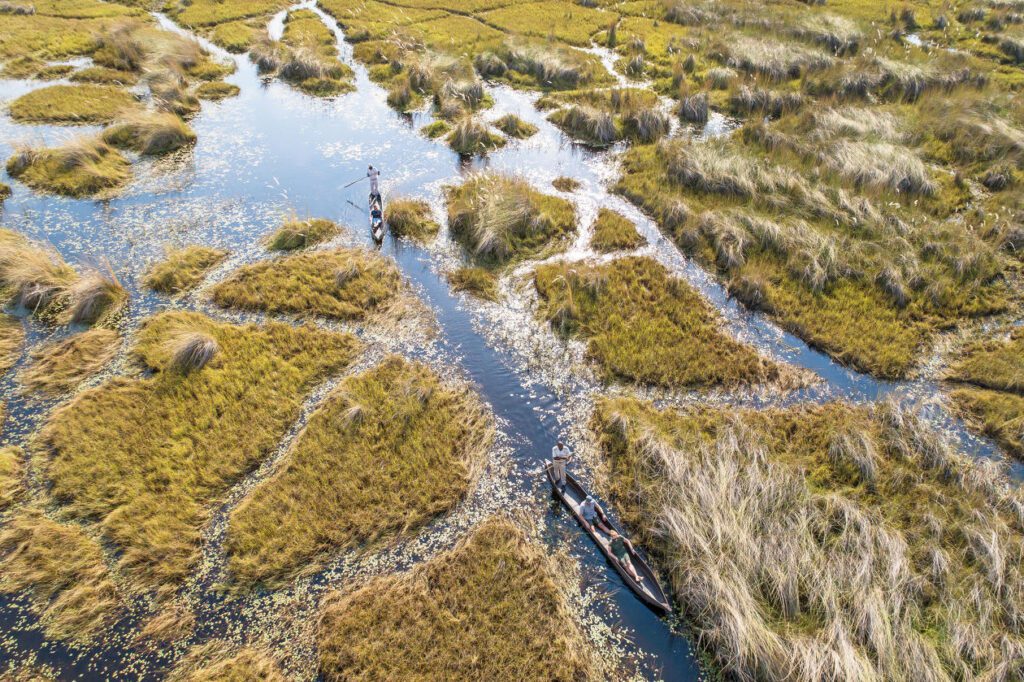

Okavango Delta – Botswana’s Jewel and a UNESCO World Heritage Site
Quenching the Kalahari’s thirsty earth as it flows inland, the Okavango River’s delta is Africa’s biggest inland oasis – a 16,000km² maze of reed-lined channels, floodplains and islands, which is at its most expansive during the annual flood period (April to August). Across the UNESCO World Heritage-listed wilderness there’s a host of areas to explore, headlined by Xugana, Khwai, and Moremi, where safaris span everything from guided paddles in mokoros (traditional dugout canoes) to solar-powered boat cruises, walking safaris and 4WD excursions. Yet the wildlife sightings are on tap no matter how you get around, with the Delta home to everything from elephants, hippos, lions, leopards, cheetahs and wild dogs, to over 450 species of birds. And with more than 50 lodges and camps scattered throughout the wilderness, you can take your pick of exclusive glampsites, luxury lodges and cosy chalets in the thick of the action. For example, Xugana Island Lodge hosts a maximum of 22 guests with luxury tents overlooking the Xugana Lagoon – one of the region’s most spectacular permanent–water sites – along with walking and night safaris, cruises, and scenic doors-off helicopter flights for keen photographers.
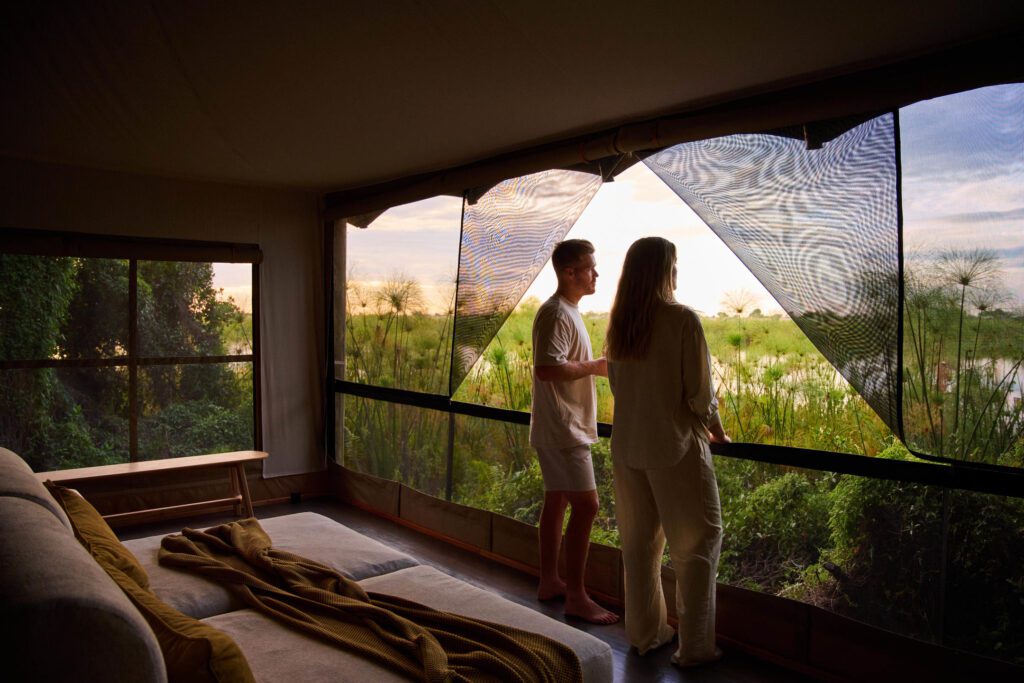

Moremi Game Reserve – Prime Wildlife Viewing in the Delta
Perched on the eastern edge of the Okavango Delta, the Moremi Game Reserve covers roughly 4,900km² of rugged savannah, papyrus-fringed channels, mopane woodlands, floodplains and forested islands. It’s celebrated as one of Africa’s richest ecosystems and is the Delta’s only officially protected area, making it a vital conservation stronghold. And its sheer abundance of wildlife makes it unmissable: buffalo, elephant, hippo, lion, leopard, cheetah and endangered wild dogs are all regularly seen, and its birdlife is equally prolific, with fish eagles, kori bustards, wattled cranes, southern carmine bee-eaters, bateleurs and Pel’s fishing owls topping the twitcher’s hitlist. Key safari sectors to look out for include Chief’s Island, Moremi Tongue, Xakanaxa, Third Bridge, and Mombo – each prized for their high densities of game and excellent predator sightings, particularly lion and leopard around Mombo and the western channels. Ready to settle in for a few nights? A standout place to stay is Xakanaxa’s Camp Moremi, where 12 luxurious, East African-style thatched tents have their own decks for expansive views over the lagoon, putting you in prime position for some of Africa’s very best birding and wildlife spotting.
Explore the wildest highlights of Chobe National Park, the Okavango Delta, and Moremi Game Reserve over 9 extraordinary days on our Authentic Botswana holiday.
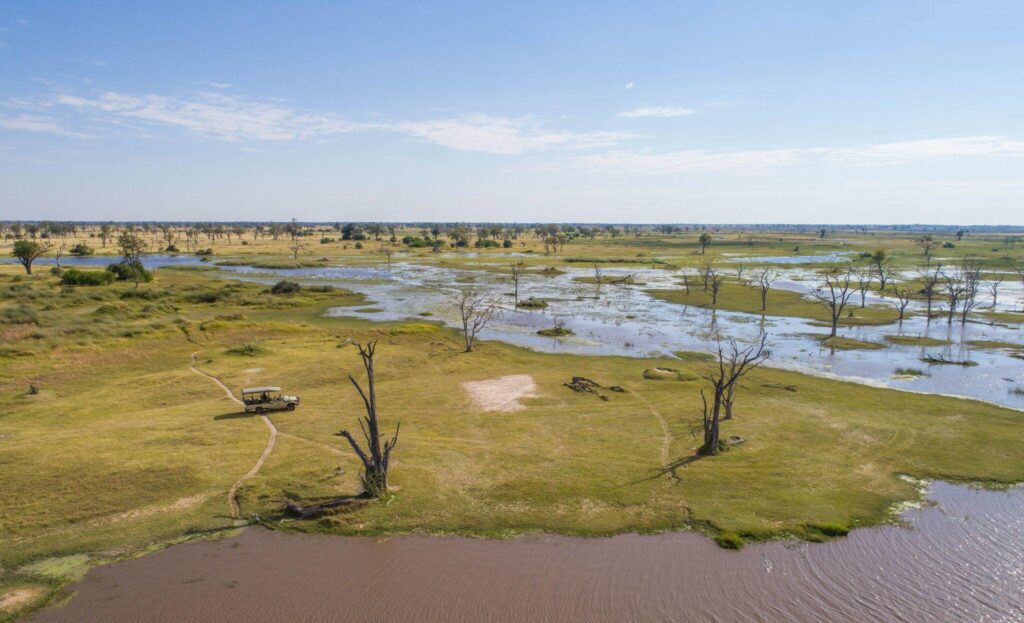

Khwai – Wildlife and stargazing experiences
Khwai is a 2,000km² patchwork of open savannah, riverine forest, floodplains and winding waterways tucked between Moremi and Chobe, on the Okavango Delta’s northeastern edge. It’s one of the Delta’s most prolific wildlife areas, home to elephant, buffalo, lion, leopard, hyena, wild dog and large herds of red lechwe, with key areas to explore including the Mbudi River, Mababe Depression and Khwai village itself. And after you’ve wet your whistle with sundowners, Khwai’s low light pollution makes it one of the best places in Botswana for stargazing, with the Southern Cross, Milky Way and Magellanic Clouds often visible. A stellar place to see them: the MmaTsebe Tented Camp. This glamping retreat is set within ancient riverine forest along the Mbudi River and, along with game drives and mokoro safaris, the camp offers excellent stargazing sessions. Plus, a stay here is a chance to Make Travel Matter: the camp is 100 per cent solar-powered and supports a range of local community projects – all while training and employing staff from across the country.
Experience every wild perspective on our 4-day Indepth Khwai Fly In holiday – an unforgettable safari adventure by air, 4WD and mokoro.
Maun – Gateway to the Delta and Safari Logistics Hub
Sitting on the southeastern fringe of the Okavango Delta, Maun is Botswana’s main jumping-off point into the wilderness. Here you’ll board light aircraft bound for remote camps or join 4WD convoys headed into Moremi, Khwai and beyond. With a population of about 60,000, Maun pairs frontier charm with essential travel infrastructure – safari outfitters, fuel stations, shopping centres and the country’s second-busiest airport. If you have time, theNhabe Museum is well worth a visit – it’s a community-run project dedicated to preserving the region’s cultural traditions through art, photography and heritage displays. You can also explore The Space Botswana creative hub, browse craft markets, and stock up on binoculars, batteries or safari gear before going bush.
Chobe National Park – Home of the Elephant Herds
Encompassing some 11,700km², Northern Botswana’s Chobe National Park is home to Africa’s largest concentration of elephants – in fact, at least 50,000 of them congregate here during the dry season (May to September). Along with huge herds of peaceful pachyderms, the park also supports big numbers of Cape buffalo, hippos, crocodiles, and large land-based predators like lions, leopards, spotted hyenas and wild dogs. Chobe is divided into four distinct regions: the lush Riverfront, the seasonal Savuti Marsh, the papyrus-flanked Linyanti, and the arid Nogatsaa Plains, with the Chobe River being the main artery for wildlife adventures and boat safaris. Here, a stay at the Chobe Game Lodge means you can Make Travel Matter in more ways than one. This permanent lodge is located inside the park, offering electric game-drive vehicles, solar-powered boats, and is celebrated for its all-women guiding team, who account for around 20 per cent of Botswana’s female safari guides. You can also connect with the community on a cultural visit to Mabele Village, where locals will teach you how to mill maize and brew sorghum beer.
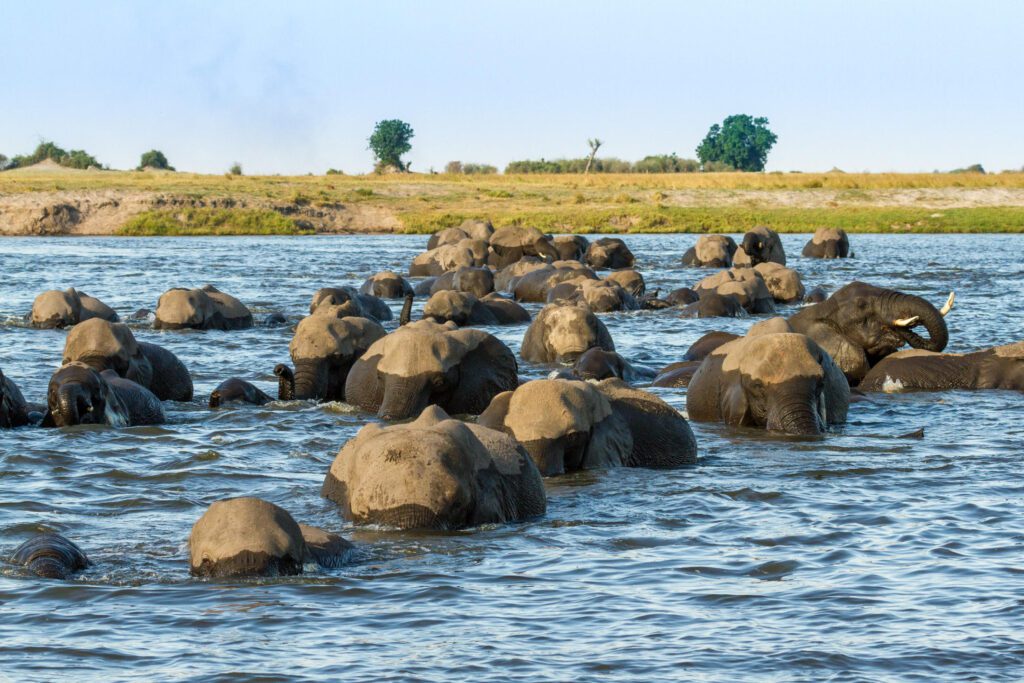

Savuti Area – Active Predators & Dramatic Wildlife Encounters
In Chobe’s southwestern corner, the Savuti region spans nearly 5,000km² and the Savuti Channel winds through its wild heart – a 100km-long river that flows intermittently from the Linyanti swamps to the Savute Marsh, surrounded by open savannah, rocky kopjes, mopane woodland, and historic San rock-art sites. This dramatic corridor ranks among Botswana’s top wildlife zones, thanks to its year-round predator activity. Resident lions – often up to 30 individuals per pride – are known for tackling elephants during particularly dry spells, and spotted hyenas, leopards, cheetahs, wild dogs, jackals, and bat-eared foxes also abound. Predator sightings tend to peak in the dry period between May and October, when game assembles around the shrinking waterholes, but they’re still frequent from November to April as migrating zebras move through the area, attracting hungry predators along their route. For the ultimate immersive stay, Savute Safari Lodge has 12 intimate thatched chalets, each with its own private deck overlooking the channel.
Our 13-day Waterfalls and Wildlife of Southern Africa holiday takes in Victoria Falls before crossing into Botswana for astounding safaris in Savute, Moremi and beyond.
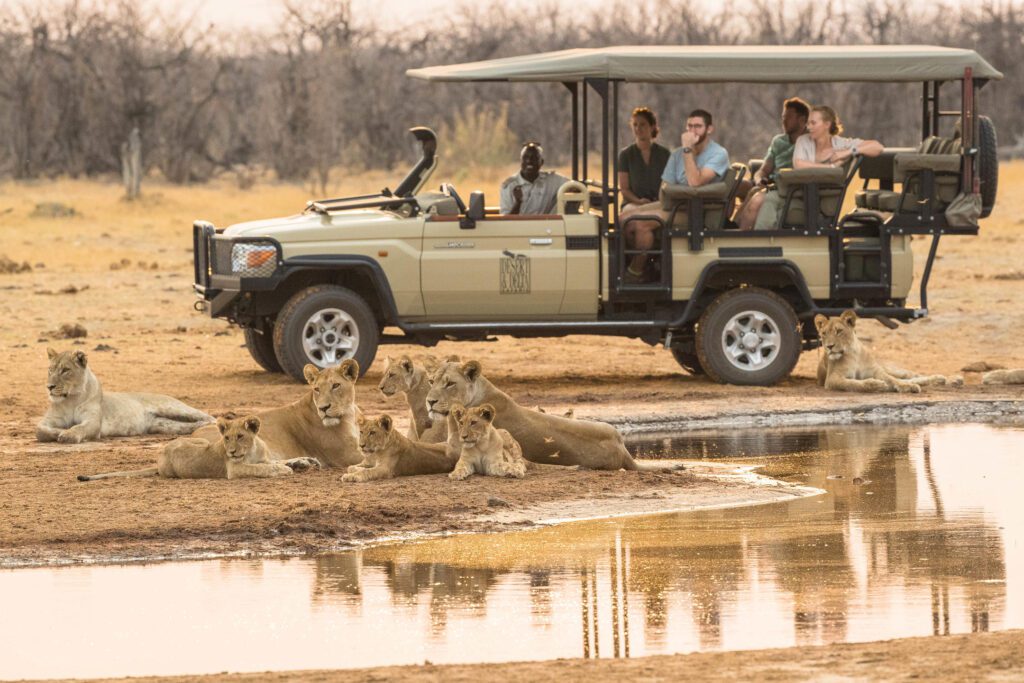

Linyanti, Selinda & Kwando – Exclusive Wetland Reserves
Wedged between the Okavango Delta and the northern edge of Chobe National Park, the Linyanti, Selinda and Kwando private conservation areas form an unfenced, interconnected wetland corridor fed by the Kwando-Linyanti river system, offering only restricted access to a small handful of high-end lodges for exclusive safaris. And thanks to its combination of year-round water and varied habitats (think: permanent rivers, floodplains, lagoons, papyrus stands and riverine forests), an ark’s worth of animals thrive here, including not only big cats, elephants and rare antelopes like sable, roan and lechwe, but also an abundance of fish (around 80 recorded species) and more than 400 types of birds.
Tsodilo Hills – An ancient rock art gallery
One of Botswana’s two UNESCO World Heritage sites (along with the Okavango Delta), the so-called ‘Louvre of the Desert’ is one of Africa’s most significant rockart sites. Set in the remote northwest of the country near the Namibian border, more than 4,000 ancient artworks adorn four dramatic quartzite hills rising from the Kalahari sands. The Tsodilo Hills paintings were made by the San Bushmen and Bantu peoples, primarily using red and white pigment, and they depict animals, humans, ritual scenes and abstract symbols. Some date back to around 2,000 years ago, while others were etched as recently as the 19th entury – offering insight into the region’s evolving beliefs and traditions. You can take a long, scenic drive there from Maun, but to explore it, you must be accompanied by a local guide – which you can arrange at the small museum and office at the base of the hills. And it’s well worth it – local-led interpretive walks reveal the deep spiritual and archaeological significance of this lesser-known wonder.
Central Kalahari Game Reserve – Unique Wilderness & Culture
“Kalahari” comes from the Setswana word “Kgala”, meaning “the great thirst” – a nod to the region’s parched terrain. But while it’s often called a desert, much of this wilderness is technically a semi-arid savannah: nearly 900,000km² of ochre-red sand stretching across Botswana, Namibia and South Africa, dotted with grasses, hardy shrubs and seasonal pans. At the heart of it lies the Central Kalahari Game Reserve – a protected area roughly the size of Tasmania, and one of Africa’s largest, most remote wildernesses. Here, fossil river valleys, salt pans and golden grasslands support desert-adapted species like oryx, springbok, bat-eared foxes, brown hyenas, and the famously powerful black-maned Kalahari lions, along with sought-after bird species like kori bustards, secretary birds and pale chanting goshawks. The region is also the traditional homeland of the San Bushmen, whose time-honoured culture centres on tracking, storytelling and peerless ecological knowledge. Guided walks led by this welcoming Indigenous community reveal how they’ve survived here for tens of thousands of years – and offer new ways of seeing lands that, at first glance, might seem barren but have long sustained an abundance of life.
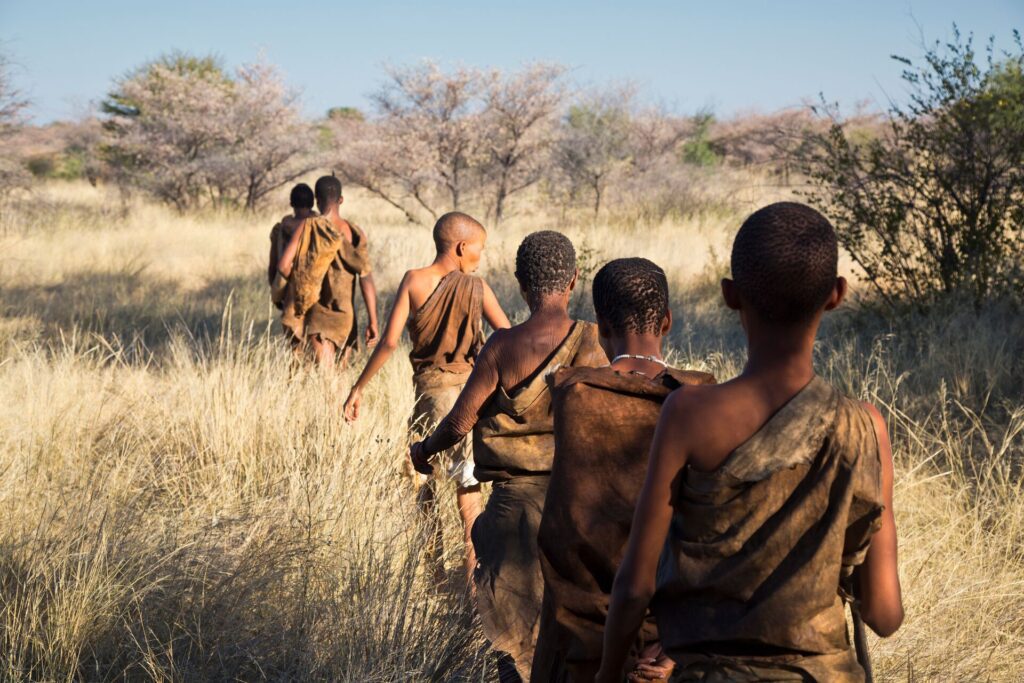

Makgadikgadi Salt Pans – Scenery, Flamingos & Zebras
Part of the sprawling Kalahari Basin, the Makgadikgadi Salt Pans cover about 12,000km² of stark white desert in northeastern Botswana, roughly 200km from Maun. This vast region is not a single pan but a system of interconnected salt flats – most notably the Sua, Ntwetwe and Nxai Pans – formed when an ancient super-lake dried up thousands of years ago. These expanses of salt, cracked earth and clay dramatically transform with summer’s heavy rains (December-March): fresh green shoots sprout and attract migrating plains zebras from the Okavango Delta in herds of up to 30,000 animals, with predators like lions, hyenas and wild dogs hot on their hooves. Then between February and April, the shallow waters fill with brine shrimp, drawing tens of thousands of greater and lesser flamingos. But all year round, the scenery here is beautifully photogenic, from Kubu Island’s ancient baobabs to the bends and wends of the Boteti River, flanked by shady floodplains – and a handful of intimate lodges, all within reach.
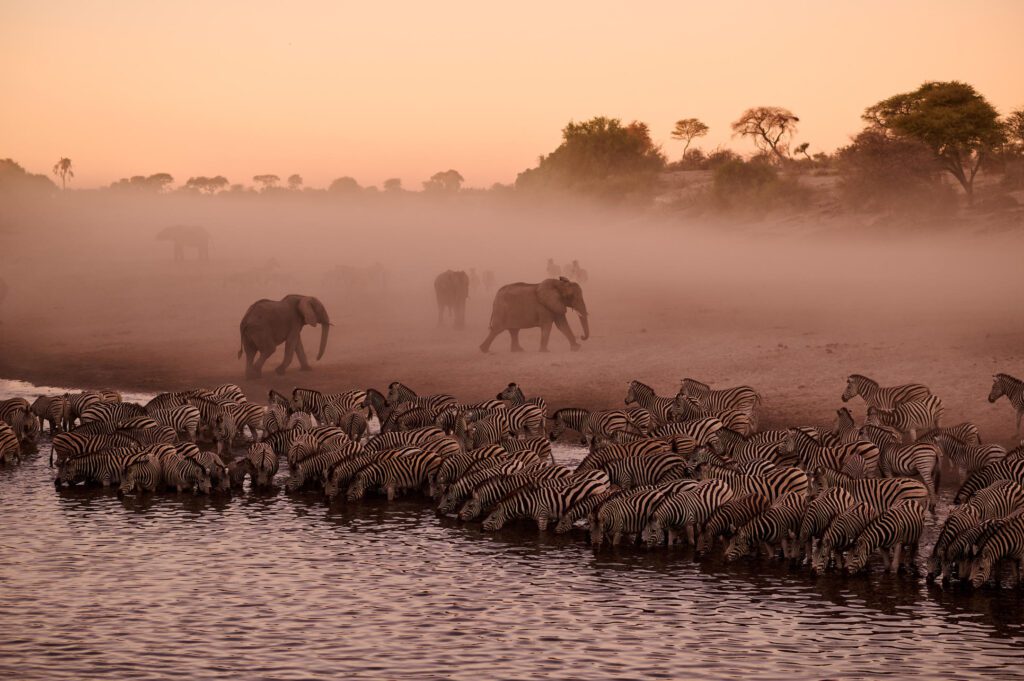

Nxai Pan and Baines’ Baobabs – Wildlife and Iconic Trees in One Spot
The 2,578km² Nxai Pan National Park is one of the key areas in the Makgadikgadi system – comprised of a fossil lakebed flanked by mopane woodlands and salt-crusted expanses, and dotted with nutrient-rich grasses, acacias and baobabs. Among them stand the Baines’ Baobabs, a cluster of seven towering baobab trees, also known as the Sleeping Sisters – all thought to be well over 1,500 years old. Wildlife here includes large migratory herds of zebra and wildebeest in the wet season, along with lions, cheetahs, meerkats, giraffes, springboks and ostriches. The combination of open grassland, isolated baobabs, seasonal wildlife surges and easy access from Maun make the Nxai Pan well worth the scenic detour.
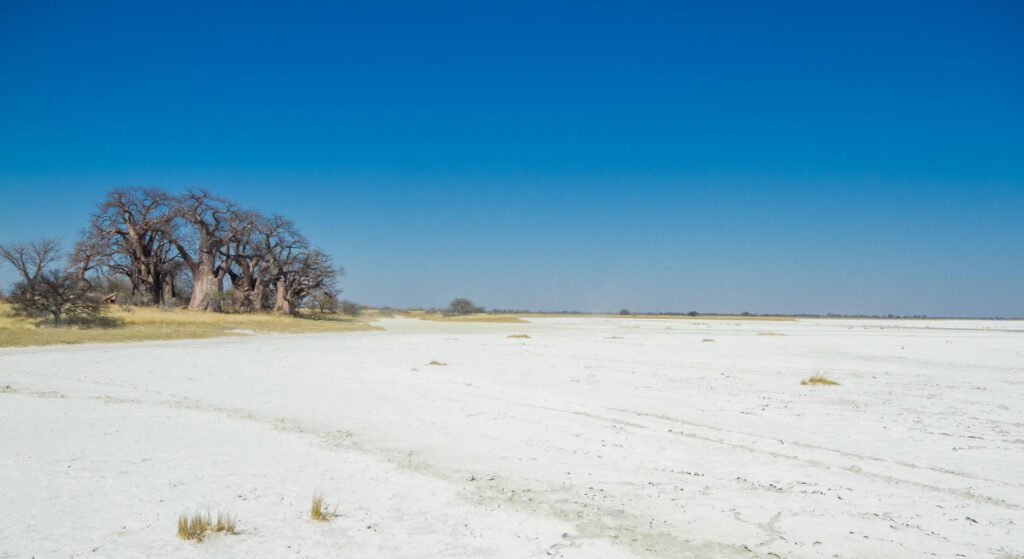

Kgalagadi Transfrontier Park – Cross-Border Desert Safaris
Deep in the southern Kalahari, the Kgalagadi Transfrontier Park straddles Botswana and South Africa, and spans some 38,000km² – a uniquely raw and open terrain of rolling red dunes, sparse scrub, acacias and camelthorn trees, and the dramatic dry fossil riverbeds of the Nossob and Auob. The main tourism gateway is Twee Rivieren, about 800km from Maun, and that area, along with Nossob and Mata-Mata, offers excellent wildlife viewing – home to seasonal herds of gemsbok, springbok, eland and blue wildebeest; huge black-maned Kalahari lions; good numbers of leopards and cheetahs; and an abundance of raptors including pale chanting goshawks and martial eagles. Because the park crosses international borders, you’ll need to carry your passport.
Experience some of Africa’s most extraordinary safari regions, its greatest train journey and its mightiest waterfall – all on one unforgettable 12-day adventure.
Tuli Block – A Secluded Safari Gem
Tucked into Botswana’s far southeast, the lesser-known Tuli Block spans some 8,000km² of striking semi-arid terrain along the Limpopo River. Within it lies the Northern Tuli Game Reserve, a fenceless conservation area where sandstone kopjes, mopane scrub, riverine forests and massive baobabs frame the shifting courses of the Limpopo and Motloutse rivers – both within Botswana’s borders. This region is known for its excellent predator sightings, including black-maned lions, leopards, cheetahs, and spotted hyenas, as well as herds of elephant, kudu, zebra, wildebeest and the occasional aardwolf or honey badger. The main entry is via the Botswana border post at Pont Drift, or by charter flight into the Limpopo Valley Airfield on the Botswana side, and there’s a handful of intimate camps and lodges within the reserve so you can really settle in and explore.
Final Tips for Planning Where to Go in Botswana
Know the seasons and regions.
Botswana is a year round safari hotspot, but you can split the seasons into two parts and choosing your travel dates will depend on your preferences. The wet season runs from November to March with daytime temperatures of 30-35°C, short but intense afternoon storms, lush landscapes, and newborn wildlife. From May to September, the dry season offers cooler, crisp days (20-25°C) and chilly nights (down to 5-10°C), minimal rainfall, and excellent wildlife viewing as animals gather at waterholes and along riverbanks. April and October are pleasant shoulder months – April sees daytime highs around 30°C and up to 20mm of rain, while October brings highs of 32-34°C and only 10mm of rainfall.
Choose your own adventure.
Public parks like Chobe, Moremi, Nxai Pan, and Makgadikgadi are government-run, affordable, and open to self-drivers, but they can be very popular and restrict activities like offroading, walking safaris, and night drives. While wildlife sightings in these official national parks can be excellent, you’ll often share them with multiple vehicles. In contrast, private concessions – usually adjacent to these official parks – offer exclusive access for lodge guests and allow walking safaris, mokoro trips, night drives, and offroad tracking with expert guides for a more intimate and flexible experience. To discover the private concessions and lodges best suited to your interests, give Adventure World’s Destination Experts a call on 1300 363 055 (AU) or 0800 238 368 (NZ).
Land and take-off.
Botswana’s main international airport is Sir Seretse Khama International Airport (GBE) in Gaborone, which receives flights from regional hubs like Johannesburg, Addis Ababa, and Nairobi. If you’re heading to the Okavango Delta or Chobe, you might fly into Maun Airport or Kasane Airport instead, typically on a short connecting flight from Gaborone or Johannesburg. Once you’re in the country, charter flights are the easiest way to reach the remote wilderness areas. Maun and Kasane serve as primary hubs for a fleet of local charter-flight operators that shuttle guests to remote lodges across the Delta, Linyanti, Kalahari and beyond.
